

In 1997 we ran a test series of approximately 50 test runs at the Shawville lab. Technician Clover Ardern first did a baseline series of 20 test runs with fairly random wood loads on a 22" Heat-Kit heater with bakeoven.
Next, we did an 11 run series with a controlled wood load. All pieces in a given run had the same moisture content, and are split from hardwood boles between 8" and 14" in diameter. The most recent test that is online (with links to previous tests) is the 8th run in the series, Run HK-f29
On February 25, 1997, we started a new test series with a modified air inlet. The inlet has an adjustable jet plate that uses the strong draft available at the end of the burn, combined with a small air requirement, to create extra turbulence for burning the charcoal faster. Data shows less excess air and a 4- 5% higher overall efficiency compared with the 11 run baseline. Compare this with the start of the series, the most recent online run being Run HK-f34 from February 26.
The last tests were run with smaller wood, using 12 pieces in a 3-3-3-3 log-cabin stack rather than 3-2-2-2. The rows are stacked tight, with the bark down (see fuel load photo on previous tests).
Data is available in Excel format.
We used a Kodak DC-50 digital camera to document the burn progressions. The timing sequence for the 16 images in each animated .gif is as follows (in minutes): 002, 005, 010, 015, 020, 025, 030, 040, 050, 060, 070, 080, 090, 100, 110, 120
Below are the tests for March 11 and March 12, 1997
To load a larger page (about 500 Kb) animations of the previous 5 tests, click here.
Air supply regulated Note almost ideal stack dilution factor of 2.5. The lower dilution is due to the smaller wood sizing, compared with previous runs |
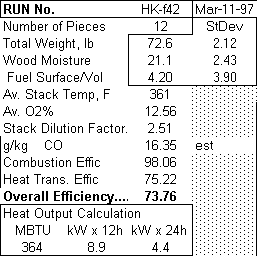 |
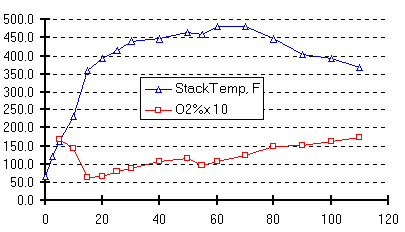 |
|
Air supply left wide open for whole test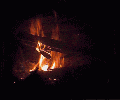 Note higher oxyen and lower average stack temperature. Surprisingly, they balance out in affecting overall efficiency |
 |
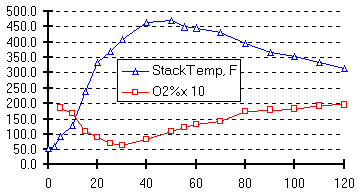 |
We are running some bake oven tests on a prototype heater.
In addition to a continuation of the combustion testing we will also be looking at:
January 18: 10:30 a.m.
Temperatures are measured with an infrared thermometer which
gives instantaneous surface temperatures with a simple
"point and shoot" operation. The graph below shows
surface temperature readings for the oven floor, back, ceiling
and side. The heater was fired with about 70 lbs. of wood.
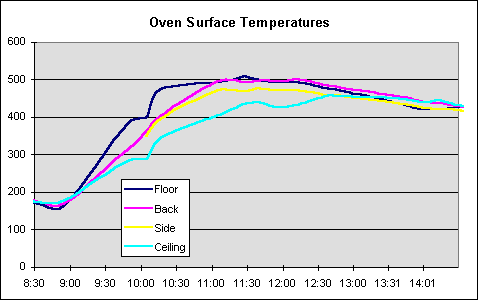
This page last updated on January 20, 2000